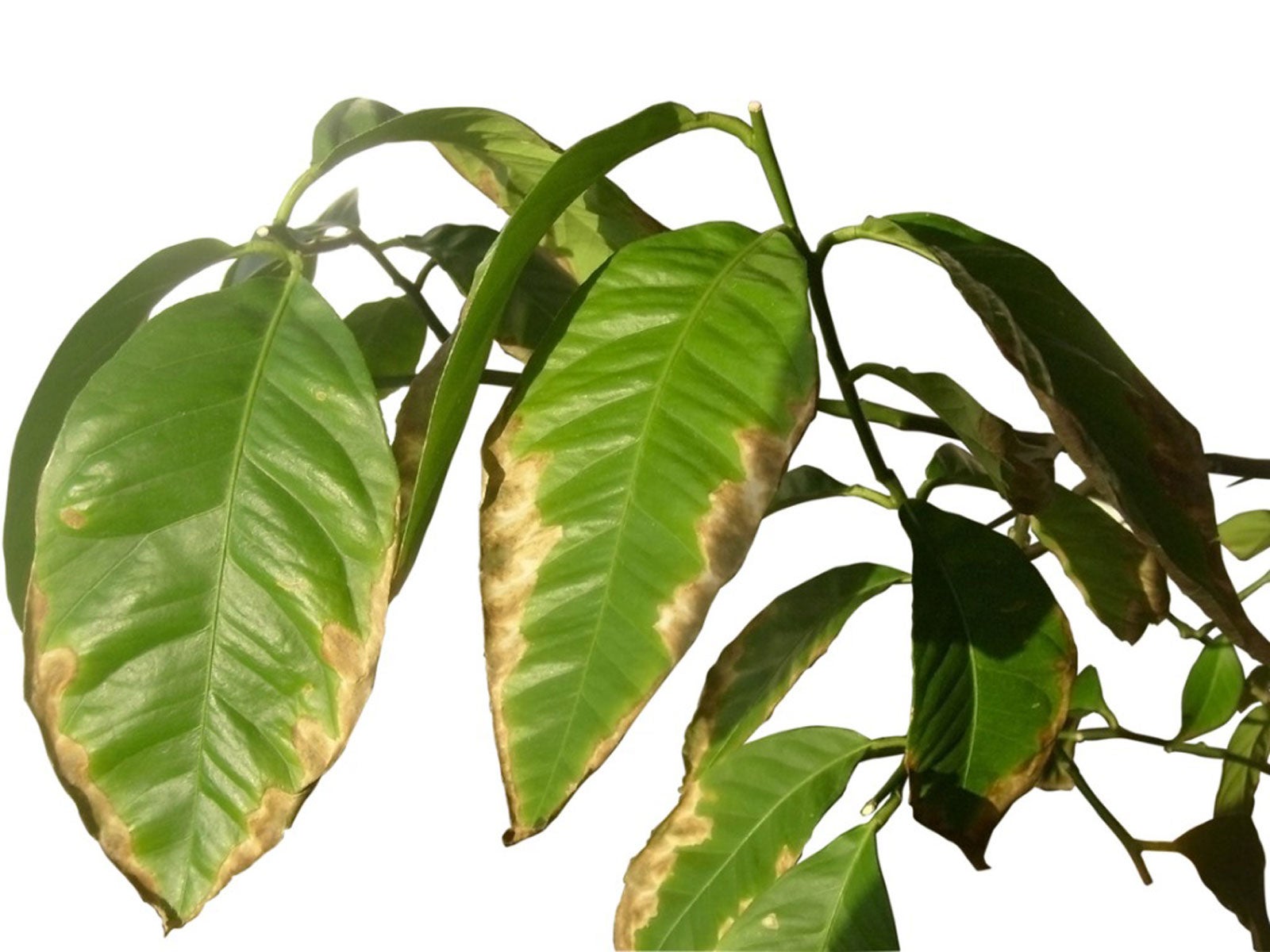What Causes Brown Edges Or Brown Tips On Leaves?
When you see brown tips on plants and leaves, it’s time to investigate. Of all the possible reasons for brown tips on leaves, one of them will probably become obvious. Put on your Sherlock Holmes hat.

COMMON CAUSES OF BROWN EDGES & BROWN TIPS ON LEAVES
Think of brown tips on plants as the equivalent of split ends on your hair. They are not life-threatening, but they can make things less attractive. And many possible causes run the gamut from too much wind to too little water.
These issues are usually caused by environmental factors and can be resolved by changing the cultural care you are offering the plant.
Brown Tips on Plants
Few things in life have one and only one possible cause. When it comes to brown tips on leaves, there are many possible culprits, and the true cause is usually two or more of these working together.
Dehydration
Plants need water to survive to the same or an even greater extent than animals do. If you don’t water your plant sufficiently, there might not be sufficient water to get all the way to the tips of the foliage. In this case, you may see the edges of the leaves turning brown. Increasing water is the simple solution here.
Low Humidity
Low humidity also has to do with water, but this is water in the air, not in the soil. This is much more likely than actual dehydration to be the cause of brown tips on plants since humidity in a residence is usually lower than plants prefer. This is particularly true during the winter months. If this seems to be the issue, you can bring in a humidifier, use a pebble tray with water, or try grouping plants which permits their collective canopies to retain more humidity.
Sign up for the Gardening Know How newsletter today and receive a free copy of our e-book "How to Grow Delicious Tomatoes".
Wind
If the plants in question are outside, wind can cause browning of leaf tips or margins. This often strikes new growth in spring or summer if there is drought plus wind. Check out whether there are more brown leaves on the windward side of the plant. If so, protect the plant from the wind with shelter fabric. A longer-term solution is to plant a protective hedge.
Salt Buildup in Soil
Brown edges on leaves can be a sign of salt damage. Where does this salt come from? It can be from your tap water or, for coastal landscapes, from the ocean winds. The ideal solution is to use rainwater for your houseplants, watering well to leach out the salt. Alternatively, use a filter that removes salt from tap water. For outdoor plants near the coast, you may have to replant your garden using salt-tolerant plants.
Excess fertilizer can also cause salt buildup in the soil. Reconsider the amount of fertilizer you are using and water well to leach out the salt.
Water Quality
Chemicals in tap water, like chlorine and fluoride, can cause browning of leaf tips for certain, sensitive plants. This often happens to spider plants, prayer plants, and calathea. Again, you’ll need to use rain or filtered water.
Herbicide Exposure
Herbicide is intended to kill plants. If the substance accidentally gets on other plants, it can cause brown spots on leaves and even plant death. Use natural methods to remove unwanted plants rather than toxic substances.
Iron Deficiency
Browning edges of leaves can result from an iron deficiency. If you suspect this, test the soil to confirm this and determine what dose is required.
How to Fix Brown Tips & Brown Edges on Leaves
No chemical solution will repair the brown tips and edges of your plant foliage. However, you can clip off the dark sections with a garden scissor. Prevent further damage by taking the steps recommended above.

Heather Rhoades founded Gardening Know How in 2007. She holds degrees from Cleveland State University and Northern Kentucky University. She is an avid gardener with a passion for community, and is a recipient of the Master Gardeners of Ohio Lifetime Achievement Award.

